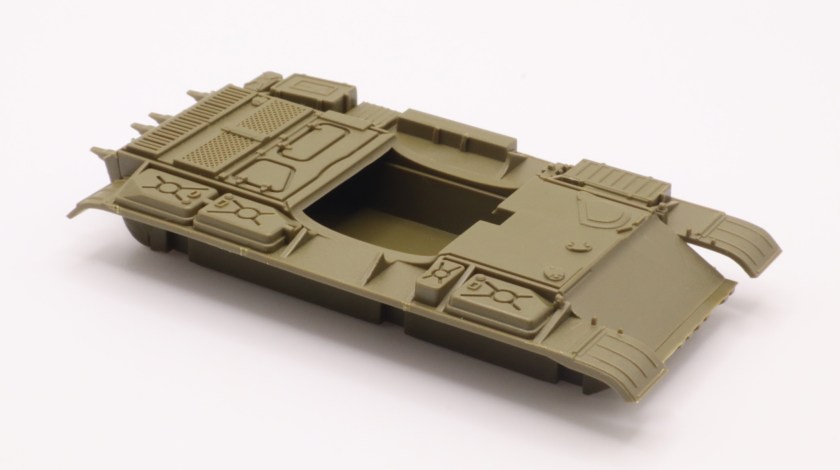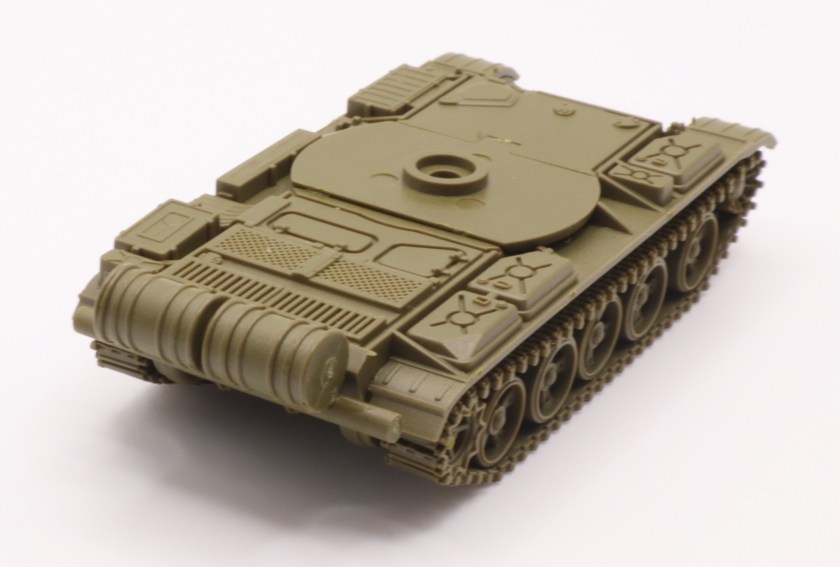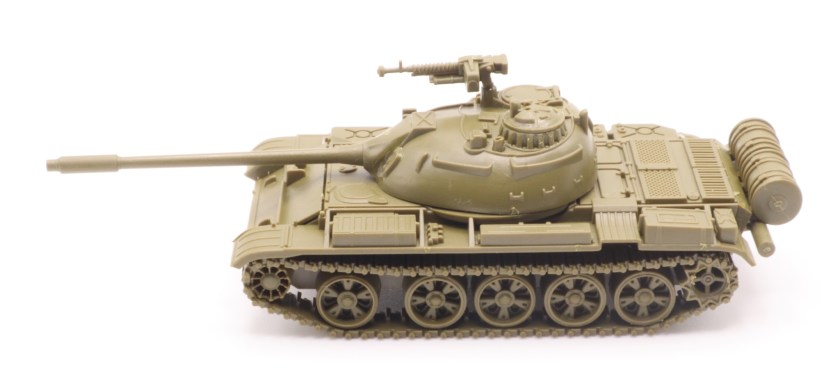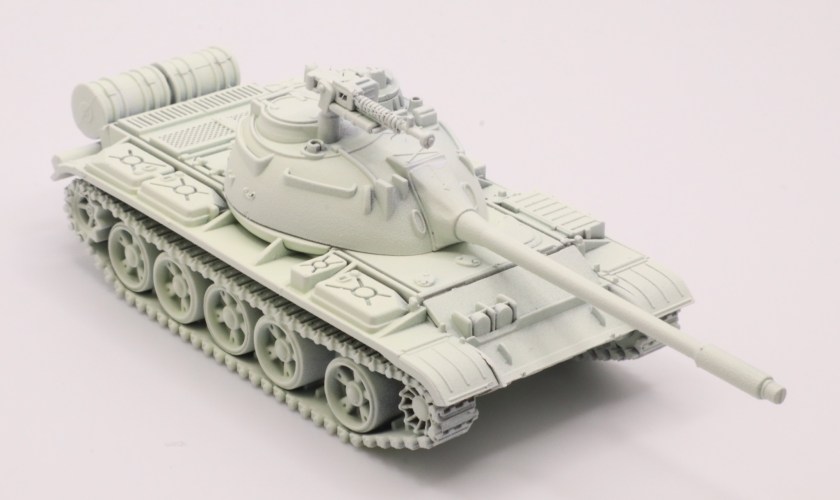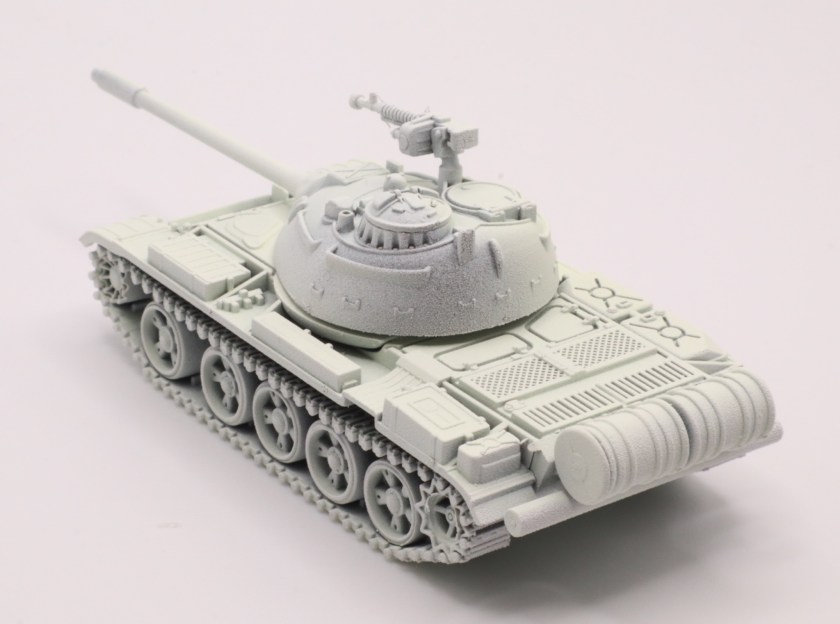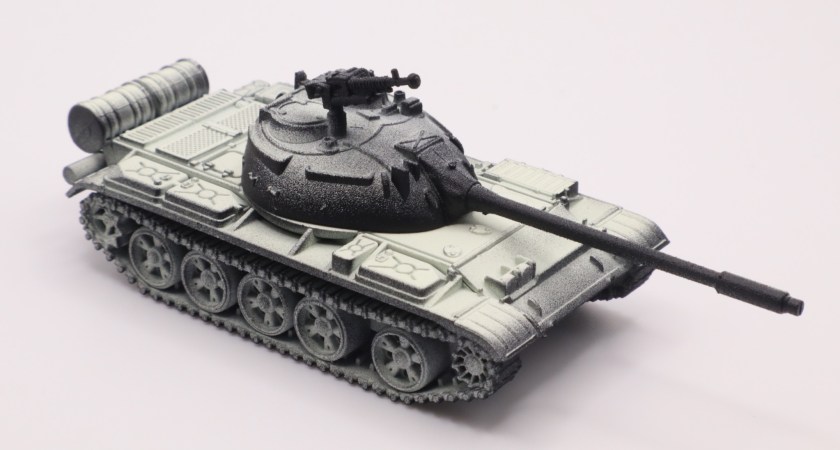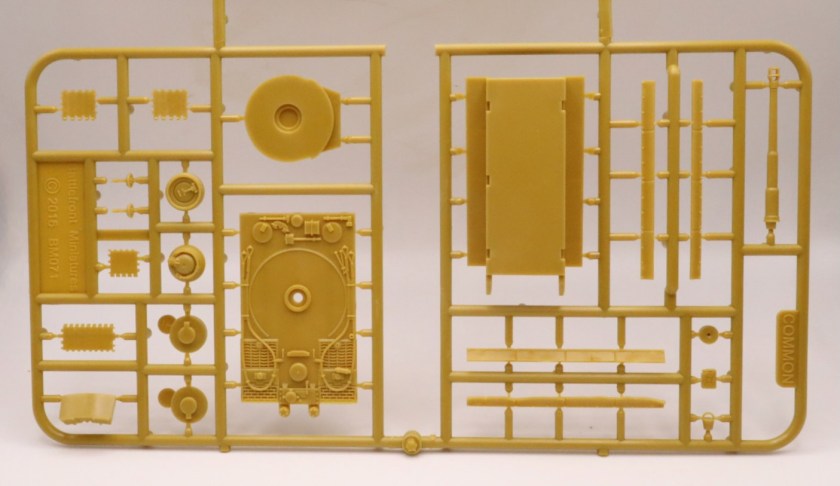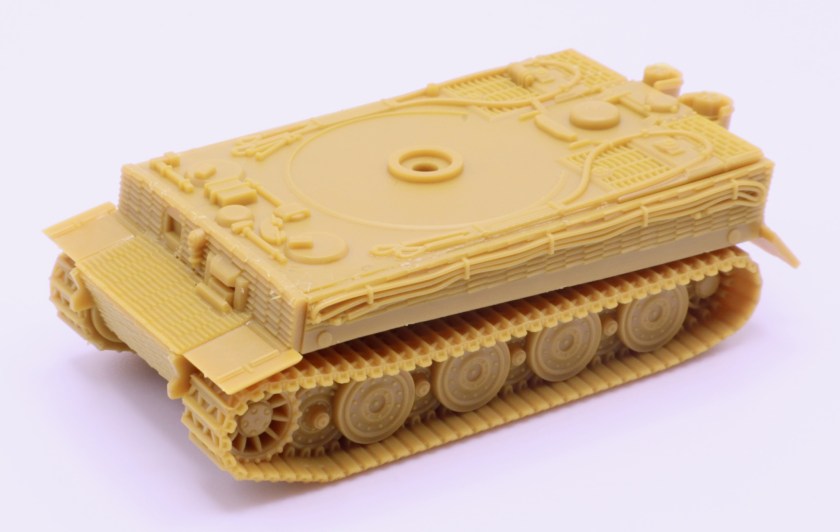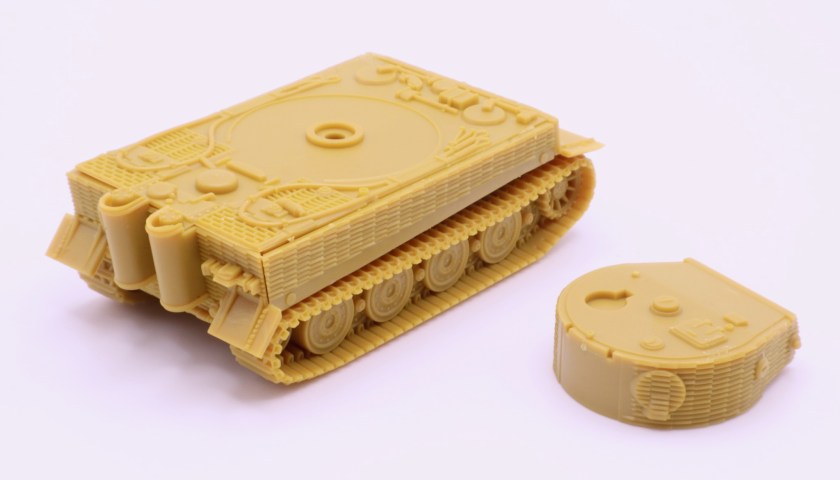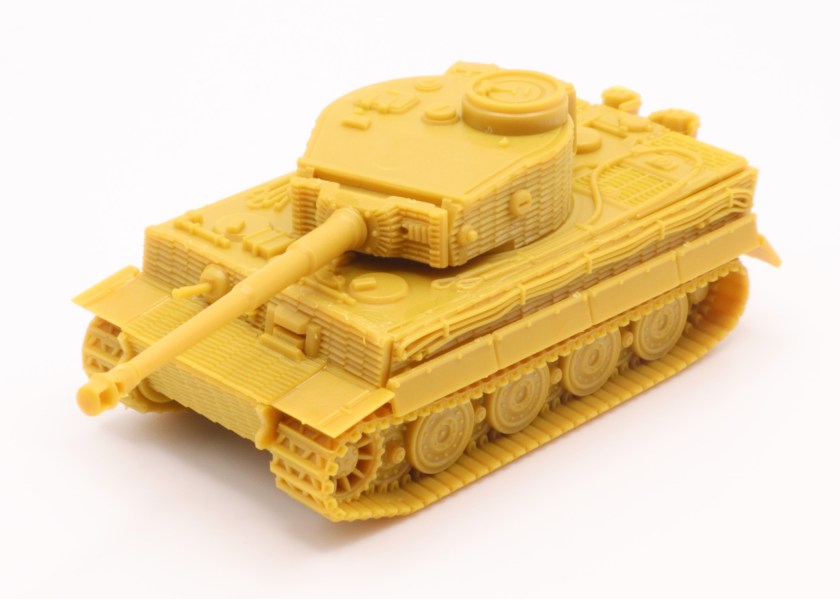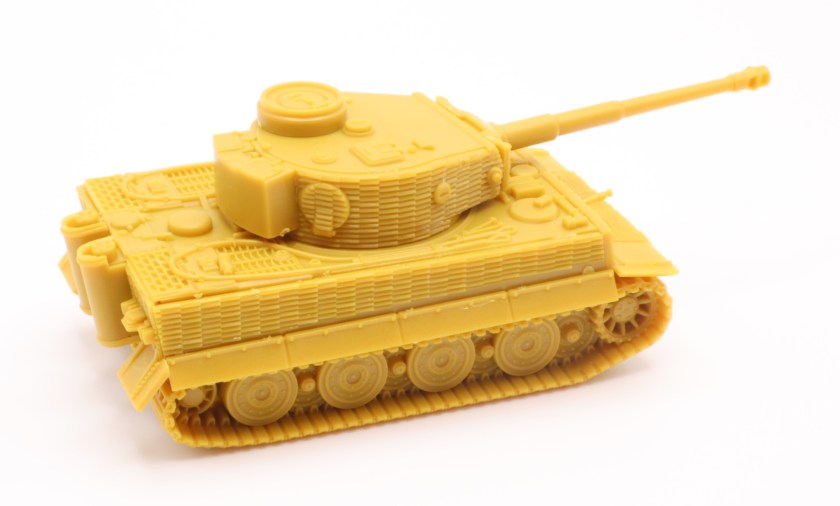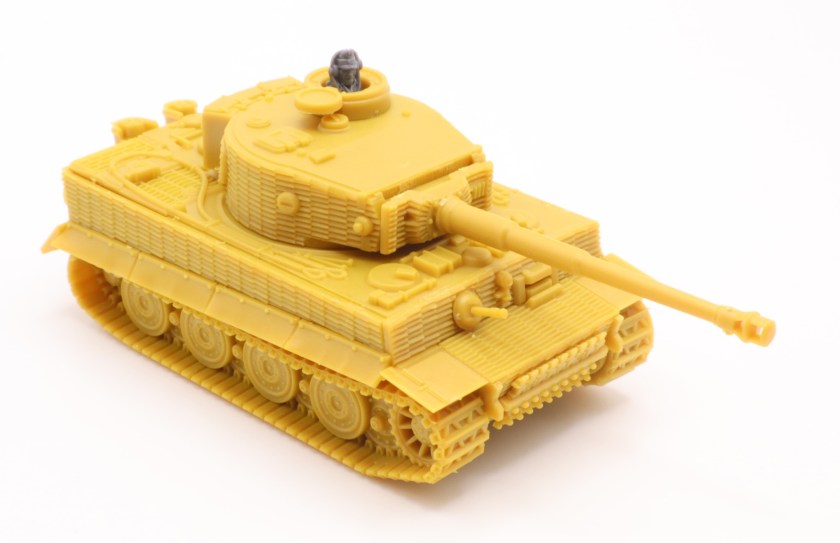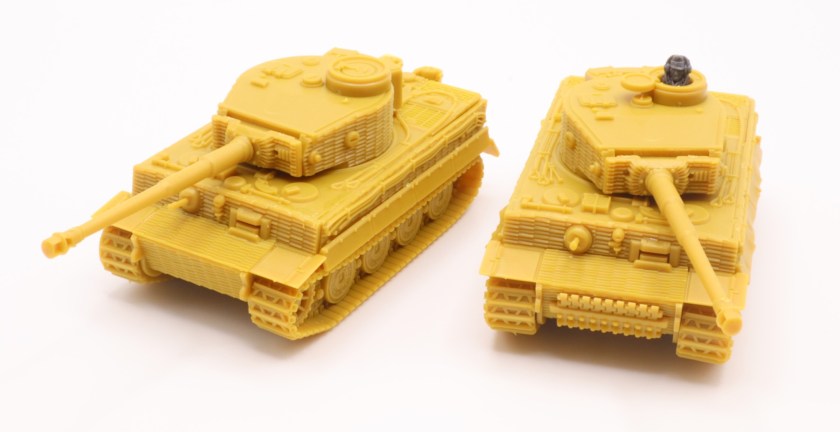One of the Clash of Steel Starter Sets have been on my wants list ever since I found out about them at the beginning of the year. I ordered Operation Unthinkable boxed set containing the British and German tanks.
There are 17 tanks, two of which are the Tortoise heavy assault tank. The Tortoise heavy assault tank (A39) was a British heavy assault gun design developed during the Second World War, but never put into mass production. It was developed for the task of clearing heavily fortified areas such as the Siegfried Line and as a result favoured armour protection over mobility.
One I had already constructed, decided to put together the second one as well. The next stage was a white undercoat.
I wanted to add some shadow to the model, so I painted the underneath of the model with a black spray.
After that, I wanted to capture the dark bronze green of the Tortoise prototype that is at the Tank Museum.
So, gave both models a spray of Army Painter Angel Green Spray.
The next stage will be painting the tracks.




























